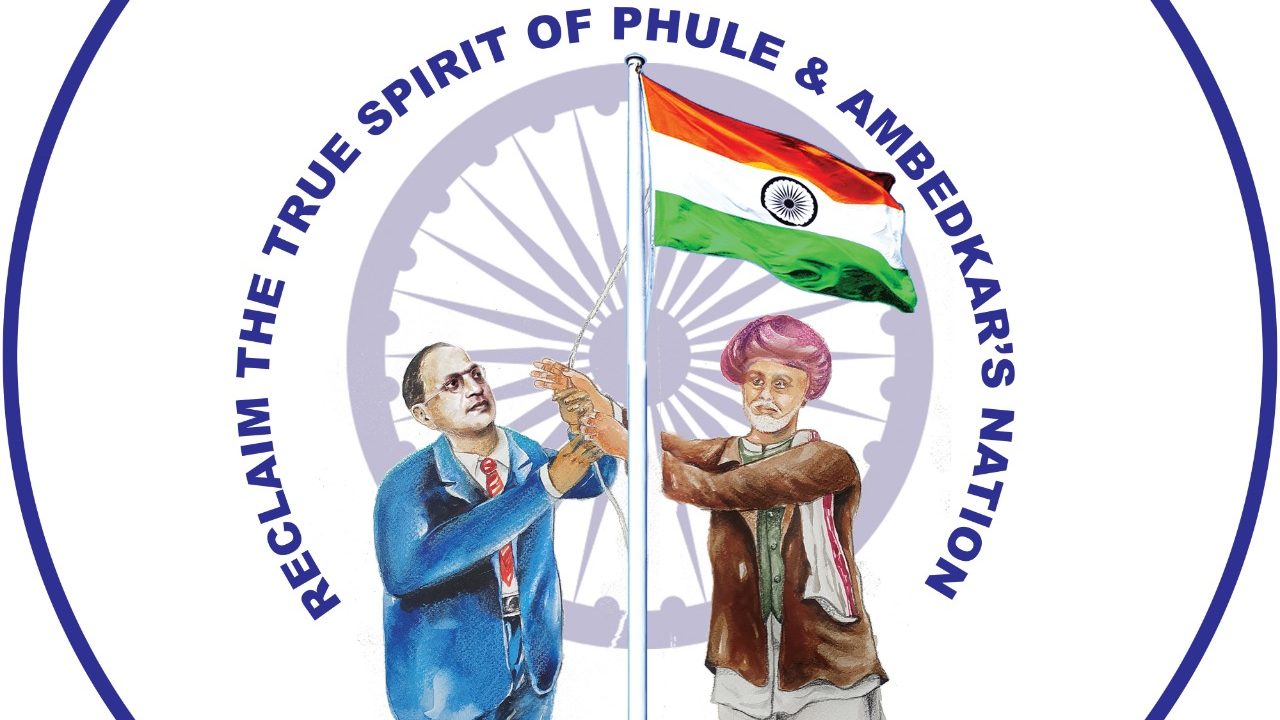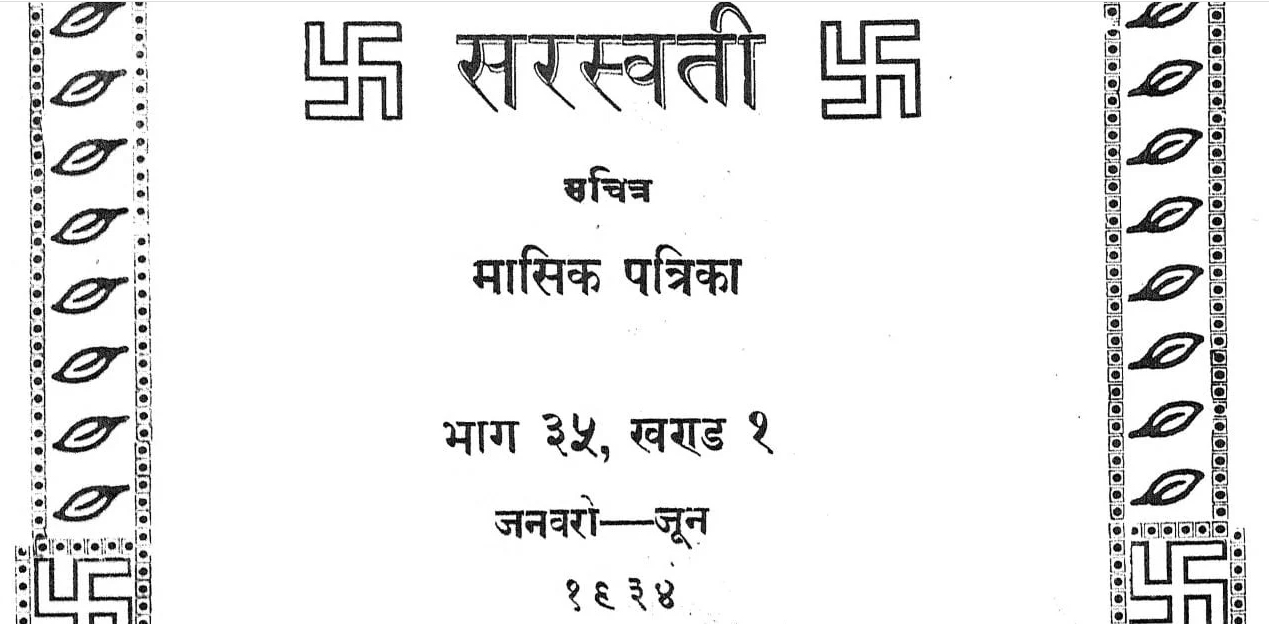GROUND REPORT BY ANIL VARGHESE

At the Raja Bali temple, in Bilara, Rajasthan, we were waiting for the mahant to wake up. He was enjoying his siesta in the temple courtyard – wrapped up in a blanket in the soothing sun of a January afternoon. We had finished talking to his assistants and gone around inspecting everything that was on the premises. We came across a few small paintings of Raja Bali, one of which was in a tiny dimly lit windowless room that could be reached by climbing up a few steps and hopping into it. The room housed broken pieces of rocks, possibly remnants of an object of some symbolic value that the builders of this meditation room had installed. Now, photos of the recent idols sat on those pieces of rocks. This appeared to be the oldest part of the temple, which may actually have been a memorial for Raja Bali. It was no longer the main attraction. Another temple had been built at one end of the courtyard and its centrepiece was a sculpture that captured Vishnu in the act of putting his foot on Raja Bali’s head. This temple was undergoing major renovation and expansion (marble pillars and all) with the funds at the disposal of the Sargara Samaj – an organization of Scheduled Castes that owns the temple. Back at the shelter, next to which the mahant was snoozing, there was a gold-plated chariot which he rides on special occasions, a trishul (trident) planted on the ground, a few vehicles including a Tata Safari SUV and a couple of horses. There were miniature idols and paintings of other devis and devtas. The gateway to the temple announced “Raja Bali Vaman Avatar Dham”. In short, it was no longer a Raja Bali temple. It had been turned into a Vaman temple, even though it still remained a place of worship for the Scheduled Castes (SC) or the Dalits and was known as an ‘SC temple’.

It was for the Dalitbahujans or the Shudras that Jotirao Phule had reinterpreted the Vaman-Bali myth in Gulamgiri (Slavery – under the cloak of Brahmanism) and sought to sift out history. The kingdom of Bali, the benevolent Datya king, stretched from Maharashtra to Ayodhya and Kashi and beyond, Phule wrote, and he died fighting off Vaman’s intrusions into his kingdom. “Birochana was succeeded by Bali who was a valiant warrior,” Phule wrote. “He freed his many satraps from the depredations of terrorists and lawless elements and organized his kingdom into a well-knit structure. He then began to extend the frontiers of his kingdom. Waman who, then, was the leader of the Vipras, did not fancy this at all. He, therefore, organized a huge army secretly, and approached the border of Bali’s kingdom, with the intention of conquering it for himself. Waman was very greedy, enterprising and haughty of temper.”
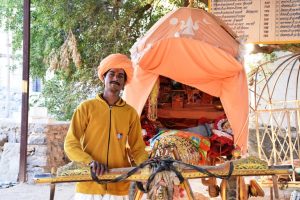
We had been on the road for 10 days and were nearing the end of our travels through Rajasthan. Our search for Bahujan cultures had taken us to Gogamedi, run by the Nath Panth. Its inclusive and egalitarian tradition had impressed us, as well as individual efforts being made to overcome aspects of brahmanization (superstitions, for instance) with a scientific temperament (urging devotees to stop using plastic, for instance). In the dining hall of the Medi, hung the portrait of Phule, Ambedkar and Zakir Hussain, even though there was a portrait of Yogi Adityanath too – this was before the Nath Panth mahant became Uttar Pradesh chief minister.
When we spotted the board of the Raja Bali temple on our way into Bilara past midnight on 12 January 2017, we had hoped to find hints of Bahujan culture here too. But they were limited to a few token paintings of Raja Bali and the meditation room with all its Dalitbahujan history effaced.

After about an hour of waiting we had had enough, and ended up nudging the Mahant awake. He must have been in his late twenties or early thirties, lean and tall, had a thin moustache, hair that almost touched his shoulders and large earrings. He could have been a college student. He gave himself some time to come out of the grogginess and perk himself him up. The attendant got him a glass of water. Then he began. Shri Shri 1008 Arjun Das ji had come there as a little boy and later taken over the reins of the temple from his Guru ji. He was the fourteenth mahant. When we asked him what he thought of Vishnu stepping on Bali’s head, he never strayed far from the brahmanical narrative.
Bilara is a small town on the national highway between Jodhpur and Jaitaran, in the heart of Rajasthan. The residents are mostly from the Other Backward Castes and appeared to be relatively prosperous. The Sirvis, who are devotees of Aai Mata, are the largest community. It seemed to us a very religious town, too. Most businesses were named after Vedic gods and goddesses. The town had a large built-up cremation area, with separate facilities assigned to each caste. Hence, a brahmanized temple of ‘Raja Bali’ was in keeping with the nature of the town. It could be that this crass brahmanization was the result of its transition from a rural economy to a semi-urban one and the founding of relatively wealthy caste organizations like the Sargara Samaj.
Maharashtra
Gail Omvedt writes in Understanding Caste: From Buddha to Ambedkar and Beyond: “The puranic myth in which the Brahmin boy Waman asks three boons of Bali and then steps on his chest to send him down to hell is taken by Phule as a story of deception and conquest by the invading Aryans. The reinterpretation had a strong resonance with popular culture, for in Maharashtra (as in parts of south India, particularly Kerala) Bali is indeed seen as a popular and ‘peasant’ king, and is remembered with the Marathi saying, ‘ida pida javo, Balica rajya yevo’ (let troubles and sorrows go, may the kingdom of Bali come). Similarly, the popular religious festivals of the rural areas are fairs centring around non-Vedic gods, all of whom (except the most widely known Vithoba) continue to have non-Brahmin priests.”
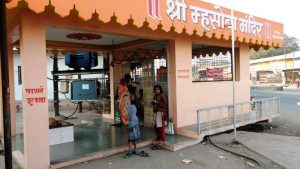
We discovered that Omvedt’s observations about rural Maharashtra were spot on as we crossed over into the state meandering through the hilly tribal belt that separates it from the neighbouring Gujarat. Some eighteen temples of Mhasoba are found on Google Maps alone. Only one of the five we visited has been mapped. It was this popular culture that Phule drew on when he wrote Gulamgiri. “He [Baliraja] was a friend of the downtrodden … Baliraja had appointed two other high-ranking officers in Maharashtra known as Maha-Subha and Chief Justice of the nine continents to look after the Revenue and Justice (Law) Departments respectively of his vast Kingdom. There were many subordinate officers under them. The corrupted form of ‘Maha-Subha’ is ‘Mhasoba’. This Maha-Subha used to undertake a careful survey of the crops and other agricultural operations, and used to keep all the tillers of the land happy and contended, by granting them concessions if and when needed. That is why we find the Maratha farmers installing a stone image of this Maha-Subha in one corner of their farms and painting it in bright vermilion colour.”
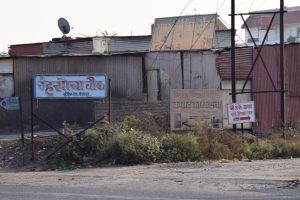
D.D. Kosambi, the polymath, in his book Myth and Reality, has written that the horned buffalo deity Mhasoba is another name for Mhatoba and Mahishasura, who was killed by the goddess Durga. Google Maps also shows two Mhatoba temples, both in the Pune area: one near the Rajiv Gandhi Infotech Park in Hinjewadi and another in Mhatoba Nagar, Kothrud. Unfortunately, while on the road, always pressed for time as we were, these temples escaped our notice.

We came across a small temple in Vaijapur while we were driving from Shirdi to the Ellora caves. The road junction at which the temple stood had been named after Mhasoba too. Shailesh, the priest of the temple, belonged to the Teli community and ran a teashop few metres away. He had been told that his ancestors who lived during the time of the Mughals built the temple. He said the Mhasoba temples are always found outside the villages and Mhasoba is believed to be the guardian or protector. People from all castes visit the temple.
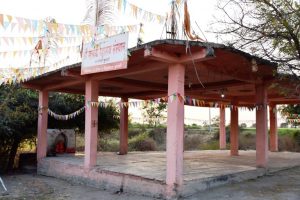
This unheralded, minimalist temple, with a “pindi” – a mud/rock object painted reddish orange – shaped like a milestone and an oil lamp, belonged to the “local traditions” in historian Rosalind O’Hanlon’s words as opposed to the “all-India traditions of Hinduism”, in which Shirdi’s Sai Baba is a relatively new entrant. Leaving behind the hotel district that Shirdi has now become, the busloads of people who arrive there from all over India, the religious opulence that is everything but what the Sai Baba stood for, we were entering the Maharashtra Phule identified with in Slavery (Gulamgiri). There was a brief interlude though as we spent a day each visiting Ellora, Ajanta and Karla and admiring the breath-taking rock-cut caves and getting an overview of the evolution of Buddhism, which is also a key aspect of India’s Bahujan history. Heading back from Ajanta, we ran into a Mhasoba shrine that had reddish orange conical pindis and a shelter, and into another Mahishaswor temple, boasting a massive rock painted reddish orange, in Aurangabad, as we were nearing the city. Interestingly, the priest in the Mahishaswor temple is from a nomadic tribe called Wandari. People from all castes visit the temple and they come from faraway places too.

Avinash Das, a journalist friend from Bihar graciously hosted us in Mumbai, where we spent a night. He had just finished working on his first film, Anaarkali of Aarah, and the Mumbai film world was getting to know him. The next morning we had a chance to “see” Mumbai’s history through former Dalit Panther J.V. Pawar’s eyes as, while sitting in his office, he took us down memory lane – growing up in the city’s red light district and leading a campaign against casteist atrocities in the 1970s.
Befittingly, our next destination would be Phulewada, the place where Jotirao and his wife Savitribai lived and worked and from where he sought to liberate the people from the bondage of Brahmanism. We spent a morning there, going through the paintings in their house, which has now been turned into a museum. The paintings strive to bring this illustrious couple back to life but fall short. Thankfully, the written accounts of the life they lived and their empathy and compassion in their own revolutionary writings have succeeded on that front. Mhasoba wasn’t far away from Phule’s house. We spotted a miniature pindi under a tree, next to which a couple were seated, making garlands of flower. The pindi was also accompanied by miniature idols of Maruti (Hanuman), Shankar and Shani. The couple told us about a temple that used to be at that spot but had been razed by the municipal corporation to make way for the road. That may have been the temple of Mhasoba.

When we saw a Maruti (Hanuman) next to a Mhasoba, and that too in Phulewada, Phule’s play, ‘The Third Eye’, came to mind. A cultivator in the play begins to find idolatry so repulsive that he explodes in anger: “I can see now this stone [Maruti] is not worthy of worship, and if I smashed it now and ground it into little pieces and mixed it with the earth and made rangoli patterns with it, then perhaps another credulous man like me would not listen to the Brahmans, be deceived in its name and fall headlong into debt.”

Just outside Phulewada, there was yet another Mhasoba shrine by the side of the road.
Few have studied the life of the Phules more closely than this couple who live about 200 kilometres away in a village called Kasegaon. From their tiny, old home here, Gail Omvedt and Bharat Patankar have written volumes on Indian society and culture, borrowing insights from Phule and Ambedkar and adding their own. Even today, when they are well past their retirement age, Patankar is a busy activist, getting the villages what is their due, for example, “air rent” from companies who set up windmills in their land. While he does that, his brother, who lives with him, goes to their fields late in the evening every day to water the crops. They live in a water-scarce region, as is evident by the steel vessels filled with water and stacked up in their kitchen. When one of us brought up the uproar in Delhi about the observance of Mahishasur Martyrdom Day in October 2014 and February 2016, he too told us about Mhasoba – that outside almost every Maharashtra village there is a Mhasoba shrine.
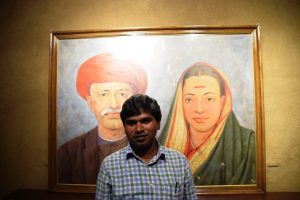
We were headed to just one of those villages next – a village called Hitni, on the Maharashtra-Karnataka border – but not before we took a night halt in Shahu ji Maharaj’s Kolhapur.
The next day, we reached Hitni around noon. It was a picturesque setting. The highway led us down to a valley, which stretched out in front of us, green and flat, as far as our eyes could see. Somewhere in that expanse, lay Hitni. A hitchhiker helped us get there. People from as far as Mumbai and Hyderabad come here with their needs and if and when their needs are met, return to present their offerings to Mhasoba. An entrance led to a courtyard where to one side sat a cone-shaped rock with a coating of reddish orange paint, which was supposed to represent Mhasoba. It sat on a spring that apparently never runs dry. A priest sat next to Mhasoba and presented offerings on behalf of the pilgrims who were seated outside the railing. Inside the courtyard there was a reddish orange oval ‘pindi’ that represented Brahmdev. A new concrete frame was built for the entrance to this courtyard in 2004 on which we could see carvings of Vishnu.

Were these signs of Brahmanism creeping in? We couldn’t tell for sure. But further down in Mysore, where the statue of Mahisha stands atop a hill, Prof Mahesh Chandra Guru and other like-minded teachers and students are outspoken in their critique of Brahmanism. We had heard about his exemplary courage, published stories about his arrest for his comment on Ram, but had never met him in person. That was our next mission – to sit next to him and have him take us through his adventures. Over the next few days, we would cross the Western Ghats and the Mhadei Wildlife Sanctuary on the way to Goa and drive along the coast and then up the hills to Madikeri, in Coorg district, and finally down to Mysore.

Karnataka
Professor Guru comes from a Dalit family of accomplished people. His staunch anti-brahmanical stand, however, seems to have discomfited even members of his extended family. They keep their distance, but that hasn’t dented his optimism or made him retreat in his pursuit of an egalitarian society. He is a popular man among his students, who vouch for his “good heart”. There was an outpouring of support for him when he was arrested in 2016 after the Ram remark. He had said, “Ram of Ramayana had violated human rights. He suspected Sita’s fidelity and victimized her. I see this as a violation of human rights.”
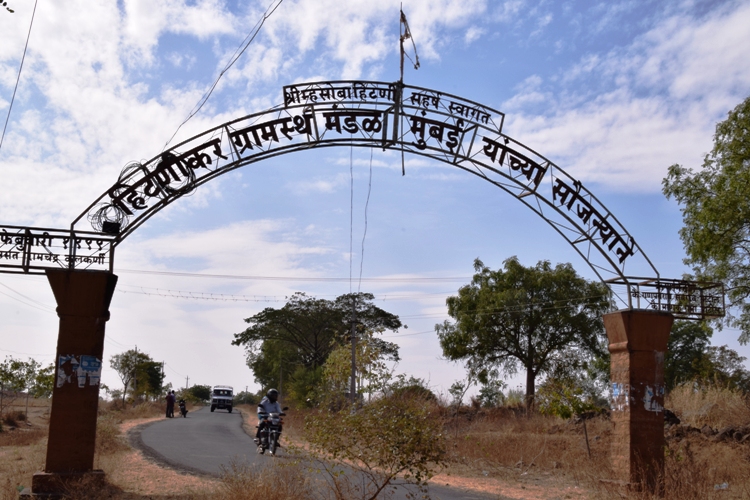
About the founding of Mysore, he says, “In 245 BC, Buddhist emperor Ashoka had dispatched a Buddhist monk Mahadeva to ‘Mahishamandal’ of Karnataka. Later, a ruler called Mahisha founded the Mahishamandal state. There is a lot of evidence to prove the historicity of Mahisha’s rule, though there is no evidence that Chamundeshwari Devi (Durga) murdered him. Brahmanvadis branded him as ‘Asur’.”

It was Prof Guru who told us about a Dalit village 60 kilometres from Mysore, where a Ram temple adjoined to a school was converted to a Buddha vihar. The residents of Hosaveedu Hundi village had replaced the idol of Ram with one of Buddha and a portrait of Ambedkar. This had assumed the form of a movement and other villages were following suit. We visited the village once we had driven up to Chamundi Hill and posed for a photo in front of Mahisha.
(This is part of the travelogue of the Forward Press Team that went on an India tour from 5 January to 15 February 2017. The team comprised the author, Forward Press managing editor Pramod Ranjan and sociologist Anil Kumar. The team travelled to nine states and a union territory: Haryana, Rajasthan, Gujarat, Daman, Maharashtra, Goa, Karnataka, Tamil Nadu, Kerala and Madhya Pradesh.)
For more information on Mahishasur, see Mahishasur: A People’s Hero. The book is available both in English and Hindi. Contact The Marginalised, Delhi (Phone: 9968527911).
Or, find the book on Amazon: Mahishasur: A People’s Hero (English edition), Mahishasur: Ek Jan Nayak (Hindi edition)
And on Flipkart:
Mahishasur: A People’s Hero (English edition), Mahishasur: Ek Jan Nayak (Hindi edition)



